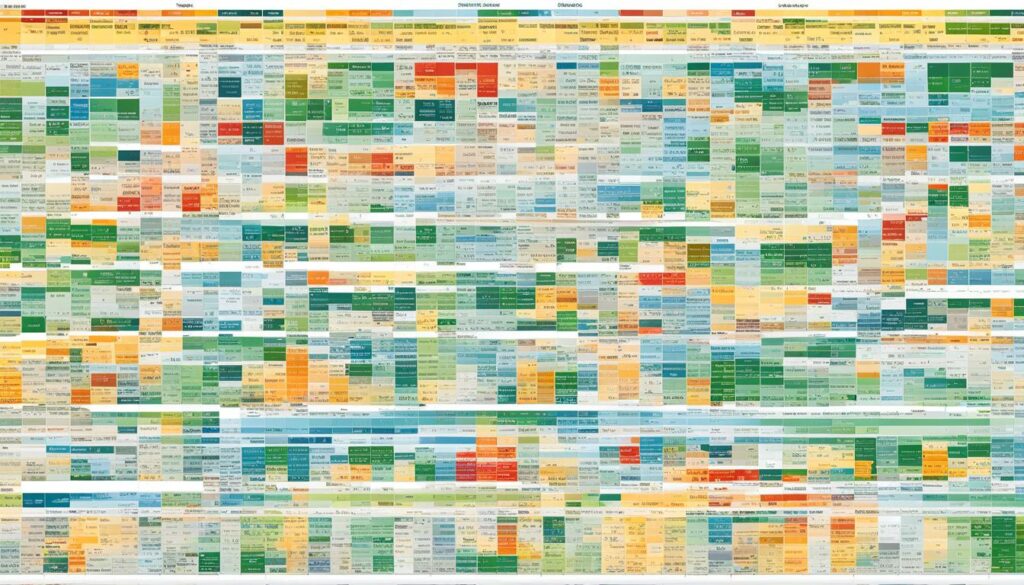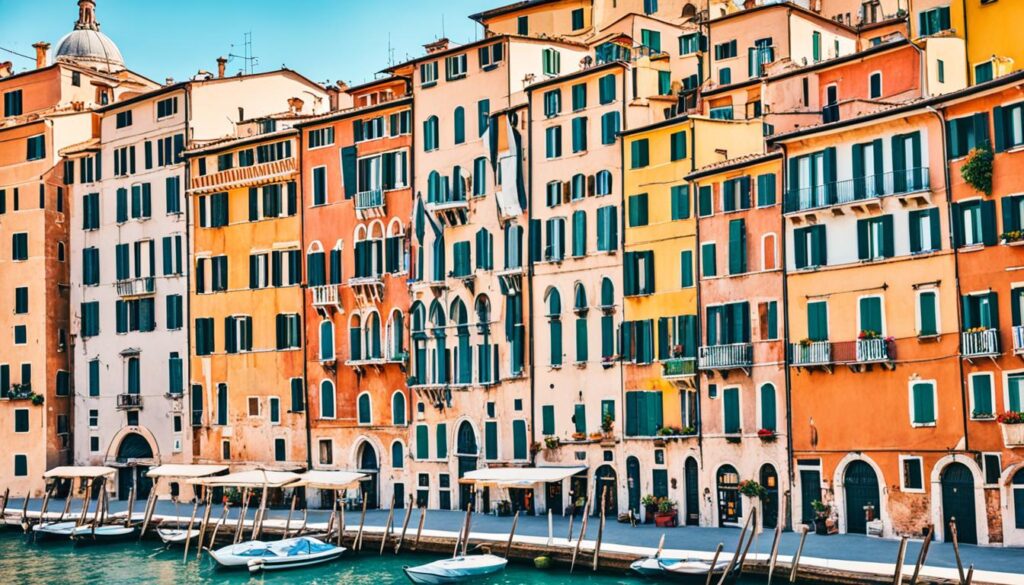Moving to Italy can be an exciting adventure, but understanding the cost of living in Italy is crucial for anyone considering relocation, work, or retirement. The average cost of living in Italy varies widely depending on the region and city, making it essential to do your research. A family in Italy typically earns an average income of around €31,641 ($31,641) annually, but regional differences can significantly affect this figure, with higher earnings in the north and lower in the south1. As such, planning for living expenses in Italy is vital for effective budgeting.
Moreover, the cost of living in Italy can be notably lower than that in the United States, often ranging from 30% to 70% less depending on geographic location1. This makes Italy an attractive option for expats and locals alike. Major cities like Rome and Milan often have higher living expenses, but regions in southern Italy offer more affordable options. For instance, a furnished apartment can be found for as little as €420 per month1. To delve deeper into understanding these costs, it’s advisable to check the comprehensive statistics available at Housing Anywhere.
Key Takeaways
- The average net salary in Italy is about €1,572 (US$1,699) per month.
- Italy ranks as the 4th cheapest country in Western Europe.
- Housing costs can vary significantly across regions, affecting overall living expenses.
- Monthly living costs for an individual are approximately €2,250, while a family may spend around €4,250.
- Health insurance costs are lower in Italy than in the U.S., with national insurance around €748 ($898) per year for a couple.
Unlock Investment Opportunities Abroad!
Understanding the Cost of Living in Italy
Understanding the cost of living in Italy requires a close look at how daily expenses stack up against income. The median annual take-home pay in Italy stands around $25,625.42, equating to a monthly income of $2,135.45, which is significantly less than the average income in the USA of $49,870.88 annually, or $4,155.91 monthly2. Key aspects such as location and lifestyle choices play a crucial role in determining individual expenses.
In metropolitan areas like Rome and Milan, housing often becomes the largest expenditure. Rent for a one-bedroom apartment in a city center averages $841.53 in Italy, in contrast to $1,769.63 in the USA, requiring 68.3 hours of work compared to 73.81 hours in the USA2. Across the board, Italians tend to spend approximately 40% of their income on housing costs3.
When it comes to daily expenses like dining, a meal at an inexpensive restaurant costs about $16.06 in Italy, which necessitates 1.3 hours of work, whereas a comparable meal in the USA costs $20.00 and requires only 0.83 hours of work2. The cost of basic grocery items reflects similar patterns. For instance, the average cost of 500g of boneless chicken breast is €5.27, and local cheese costs €7 per 500g4.
Interesting to note is that overall, Italy is about 20% cheaper than the USA when comparing food, rent, and transportation2. Understanding the cost of living comparison Italy becomes vital for those considering relocation or even temporary stays. The cost of living index Italy provides a crucial framework for budgeting in a country where affordability varies dramatically depending on lifestyle choices and geographic location.
It helps to remember that much of the price disparity often leads to significant differences in work hours required to afford basic living expenses, showing how economic factors influence daily life choices. The combination of these elements frames the essential narrative of living costs in Italy.
Average Salaries and Living Expenses in Italy

The analysis of average salaries in Italy reveals a wide disparity across different professions. For instance, a financial analyst typically earns around €40,050 annually, while a cashier makes approximately €14,437. Understanding these salaries is crucial for grasping the broader context of living expenses in the country, particularly in major cities where costs tend to be higher than in rural areas, making it vital for residents to budget accordingly5.
Comparison of Average Salaries
The average household income in Italy sits at about €29,810 annually after taxes, reflecting significant regional variations. In 2021, the average monthly rent for a one-bedroom apartment in city centers was €959 in Rome and €1,028 in Milan, underscoring the increased financial burden of urban living. When considering average salaries in Italy, it is evident that many individuals must navigate these discrepancies in income and expenses to maintain a stable quality of life5.
Monthly Living Expenses Breakdown
Monthly living expenses in Italy can vary greatly depending on the region and city. On average, a single person can expect costs around €715 in Rome and €780 in Milan, which contributes to an overall monthly expenditure of approximately €2,561 for a four-person family in Rome and €2,833 in Milan5. A detailed examination of common expenses for an individual reveals:
| Expense Type | Average Cost (EUR) |
|---|---|
| Housing | €988 |
| Utilities | €198 |
| Transportation | €35 |
| Groceries | €300 |
This breakdown reflects the average monthly living expenses in Italy, which total around €1,796.34. With 25.4% of the Italian population classified as at risk of poverty or social exclusion, particularly among households with children, managing these expenses remains a challenge for many [source]6.
Housing Costs and Rental Prices in Italy

Understanding housing costs in Italy is essential for expats and locals alike. Rental prices in Italy vary significantly depending on the location and type of property. For example, the average monthly rent for a one-bedroom apartment in the city is around €749.32, with prices ranging from €500.00 to €1,311.917. In contrast, renting a one-bedroom apartment outside the city center averages about €569.92, showing a decrease as you move away from urban centers7.
Average Rent by City
Rental prices can differ greatly from one city to another. For instance, in larger cities like Milan and Rome, the costs tend to be significantly higher. In these urban areas, a furnished apartment might cost between €400 to €7008—a point worth considering if you’re planning to relocate.
Factors Affecting Rental Costs
Several factors play a role in determining housing costs in Italy. Key elements include:
- Proximity to city centers: Properties closer to central locations usually have higher rents.
- Amenities: Access to local facilities like grocery stores and public transportation can increase rental prices.
- Market demand: In areas with high demand, landlords can set higher prices and maintain competitiveness.
These aspects are crucial for budgeting effectively, especially for those planning to live in Italy long-term.
Unlock Investment Opportunities Abroad!
Cost of Living in Italy: Regional Comparisons

When analyzing the cost of living in Italy, significant regional differences emerge, particularly between Northern and Southern Italy. The high living standards in the north are reflected in cities like Milan and Turin, where housing and daily expenses are notably higher compared to the south, including regions like Calabria and Sicily. According to recent statistics, regions in Southern Italy can be up to 1.12 times less expensive than the national average, making it more appealing for those seeking affordability in daily life.
Living in Northern vs. Southern Italy
The cost of living comparison between northern and southern regions of Italy is stark. For instance, the average rent for a one-bedroom flat in Milan reaches about €1,028, whereas in Naples, it drops to €800 on average. This disparity extends to daily expenses such as dining and transportation. In Milan, a lunch for two at a mid-range restaurant typically costs €60, compared to approximately €50 in Naples. Such differences shape the experience of living in these diverse regions, influencing everything from lifestyle choices to financial planning. Explore more about the cost of living in different Italian cities
Cheapest Cities to Live in Italy
Identifying the cheapest cities to live in Italy can offer insights into affordability without sacrificing lifestyle. Cities like Palermo, Turin, and Naples rank among the most budget-friendly places, providing reduced living expenses compared to major cities. For instance, Naples, having a cost of living that is 65% cheaper than New York, stands out as an excellent choice for expats and locals alike. By opting for these cities, residents can benefit from lower average monthly household expenses, estimated at around €2,561 for a family of four in Rome, which is considerably lower compared to the typical costs in Milan567.
Food, Transportation, and Utilities Costs in Italy

When navigating the day-to-day life in Italy, understanding the costs associated with food, transportation, and utilities is essential for effective budgeting. The cost of living index Italy reflects the varied expenses that residents face in these categories, significantly influenced by factors such as location and lifestyle choices.
Grocery Prices and Dining Out Costs
Food prices Italy fluctuate depending on the region, with supermarket shopping also reflecting local market conditions. Recent statistics show that the most expensive cities for grocery shopping include Milan (€116 per week) and Aosta (€109.91) while Naples offers a more affordable option at €75.16 weekly9. Dining out presents similar disparities; for an average meal for two in a mid-range restaurant, budget around €50 in cities like Rome.
Transportation Expenses Overview
Transportation costs Italy are generally manageable. A one-way ticket averages around €1.30, while a monthly public transport pass costs about €359. With major cities equipped with efficient transport systems, residents often rely on these for commuting and errands, further enhancing the overall affordability of life in Italy.
Utility Costs in Italian Cities
Utility costs Italy can accumulate, averaging around €130 monthly for essential services such as electricity, gas, and water9. The electricity bill for an average household hit €1,322 in 2022, with utility prices continuing to rise. Basic internet access also contributes to household expenses, with plans available starting at €20 per month, averaging around €256.
| Expense Category | Average Monthly Cost | Notes |
|---|---|---|
| Groceries | €300 – €460 | Depends on regional pricing; cheaper options available in Southern Italy. |
| Public Transport Pass | €35 | Averages across major cities. |
| Utilities | €130 | Includes gas, electricity, and water. |
| Home Internet | €20 – €25 | Basic plans generally are affordable. |
Conclusion
Living expenses in Italy can vary greatly, influenced by regional differences and lifestyle choices. Understanding the average cost of living in Italy is vital for anyone considering relocation. For example, a couple may encounter monthly expenses around 1,700 Euros, equivalent to approximately $1,850, while costs can differ significantly when moving from bustling cities like Milan to serene regions like Sicily10. Discovering affordable options, such as embracing local markets for groceries, can help manage expenses in this enriching environment.
The costs associated with housing, the healthcare system, and transportation contribute substantially to the overall living experience. Housing, particularly in tourist-heavy cities, often demands higher rents compared to rural areas, where one can find cost-effective options11. Public healthcare in Italy is not only accessible but also highly regarded, ensuring a comfortable living situation for residents12.
Ultimately, balancing earnings with expenditures while integrating into the friendly Italian lifestyle will lead to a rewarding experience. By taking full advantage of affordable cities, public transport options, and local cuisine, anyone can enjoy life in Italy while keeping their living expenses manageable11. For more insights into the cost of living in Italy, refer to this guide that explores further details.
Unlock Investment Opportunities Abroad!
FAQ
What is the average cost of living in Italy?
How does the cost of living in Italy compare to other countries?
What are the average salaries in Italy?
What are typical housing costs in Italy?
How do living expenses in Italy differ by region?
What are some local food prices in Italy?
What are the transportation costs in Italy?
What utilities costs should I expect in Italy?
What are typical housing costs in Italy?
How do living expenses in Italy differ by region?
What are some local food prices in Italy?
What are the transportation costs in Italy?
What utilities costs should I expect in Italy?
Source Links
- https://internationalliving.com/countries/italy/cost-of-living-in-italy/
- https://quasitaliano.com/the-real-cost-of-living-italy-vs-usa/
- https://amberstudent.com/blog/post/cost-of-living-in-italy
- https://www.expatistan.com/cost-of-living/country/italy
- https://wise.com/us/blog/cost-of-living-in-italy
- https://www.expatica.com/it/moving/about/cost-of-living-in-italy-79342/
- https://www.numbeo.com/cost-of-living/country_result.jsp?country=Italy
- https://visitukraine.today/blog/1156/cost-of-living-in-italy-apartment-rent-food-prices-travel-and-medical-services
- https://n26.com/en-eu/blog/cost-of-living-in-italy
- https://www.mondayfeelings.com/cost-to-live-in-italy/
- https://www.idealista.it/en/news/lifestyle-in-italy/2023/07/20/236669-pros-and-cons-of-living-in-italy
- https://www.internationalcitizens.com/living-abroad/pros-cons/italy/

Comments